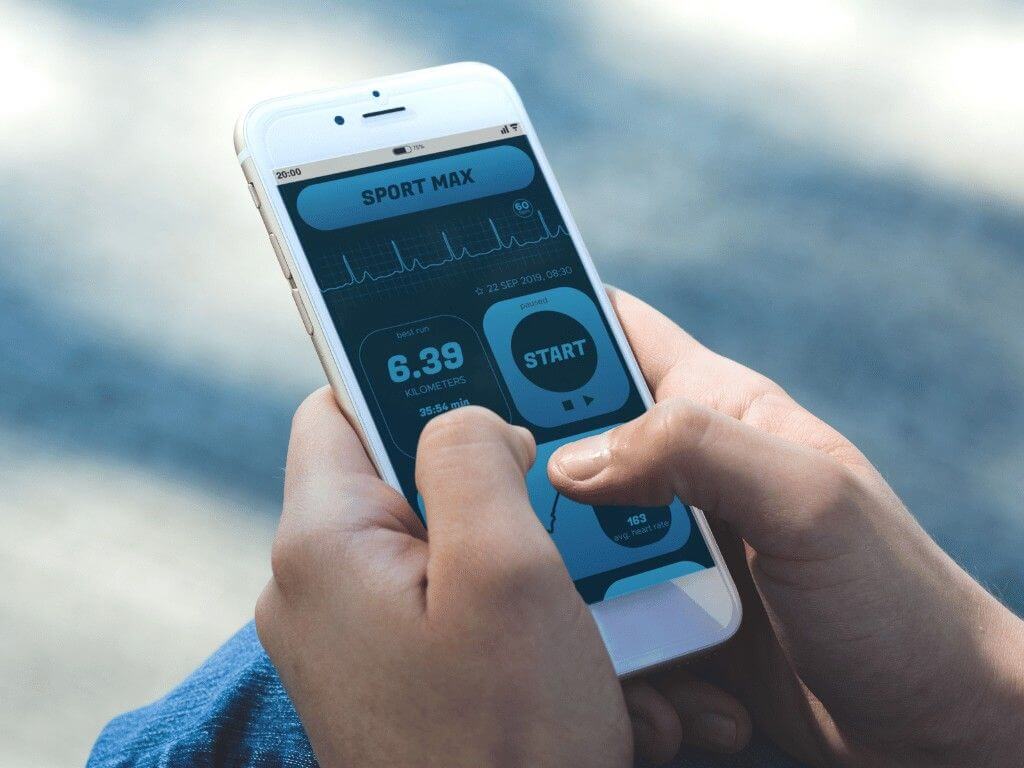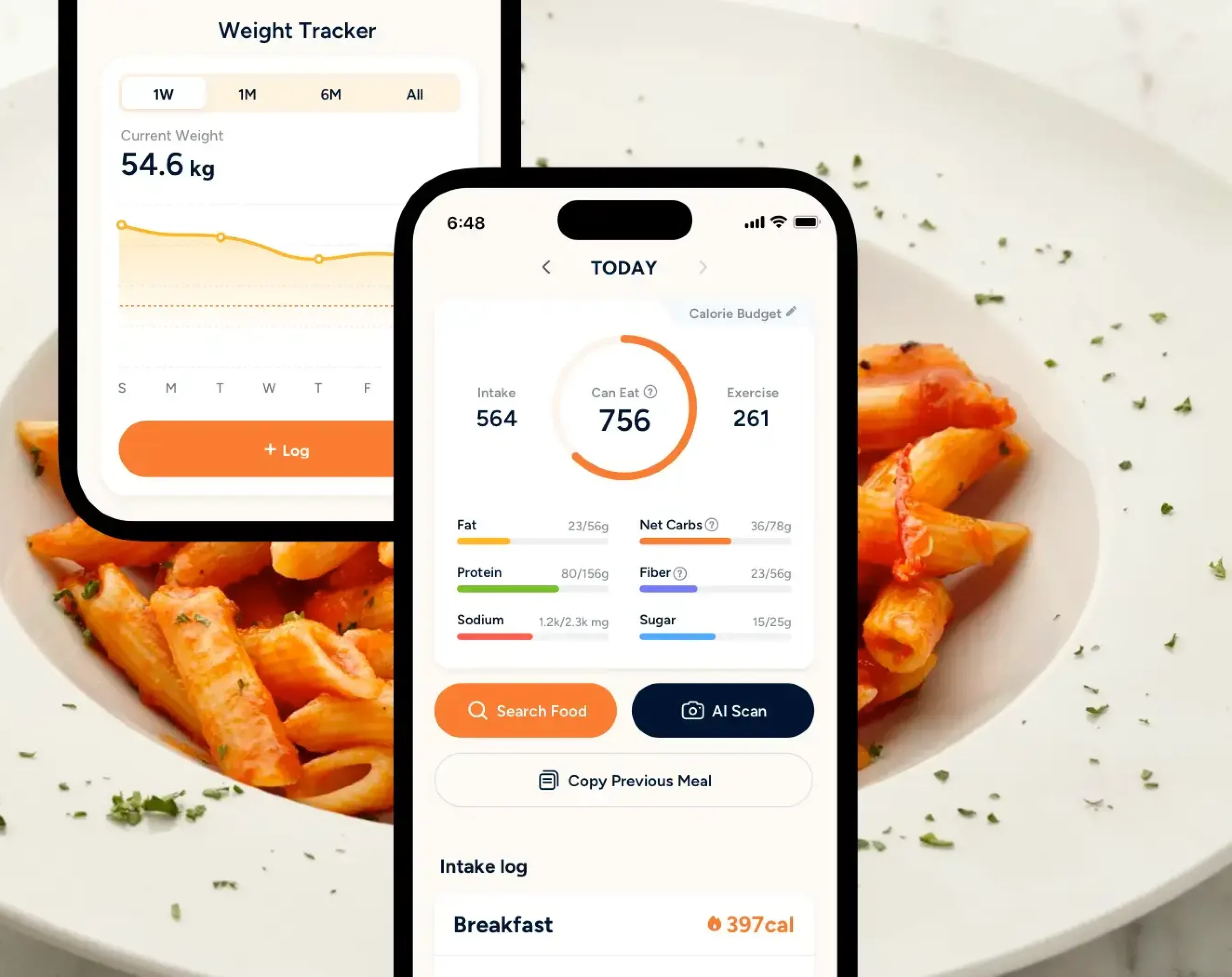“How many steps a day to lose weight” is an extremely popular search query, especially for those looking for a light impact activity. Walking is often recommended on weight loss forums as an alternative exercise for those who suffer from joint-related problems or other health conditions which may not allow them to partake in high-intensity exercises or physically demanding sports.
While “10,000 steps a day” or “10k steps a day” for short, is the general rule of thumb for the minimum amount of steps to take, is it really the best number for someone to do?
Key Takeaways
- Simple activities like walking help create a calorie deficit and promote weight loss.
- While 10,000 steps is a common benchmark, research suggests 8,000–11,000 steps daily is ideal for steady weight loss.
- Age, gender, muscle mass, body weight, metabolism, health conditions, and sleep quality all influence how many calories you burn per step.
- Brisk walking, varied terrain, and consistent daily activity are more effective than just focusing on step quantity.
- Practical strategies include walking during daily routines, meal prepping for energy, and using step trackers or apps like Eato to monitor progress.
How Exercise Supports Weight Loss

Why is 10,000 steps usually recommended as a starting point for those trying to lose weight with walking? Well, on average, you burn around 0.04 calories (though other factors like your body weight, walking speed, terrain might change this number) for every step you take; minuscule if you look at it as a standalone number, but when you calculate it accumulatively, you realise that you burn 400 calories just by walking!
Additionally, studies have shown that individuals who have more than 9,000 steps daily tend to have lower body mass index and smaller waist circumferences compared to their counterparts who don’t walk as much. Given that walking for weight loss works through a simple principle of creating a caloric deficit (burning more calories than you eat), it is one of the simplest exercises to commit to for weight loss.
How Many Steps Should I Walk a Day to Lose Weight?
The number of steps you should walk a day to lose weight depends on age, gender, physical fitness level, and overall body composition. For example, if you are an older individual, you might have the risk of falling down or having general instability when walking, so you might be unable to walk long distances at a time. Plus, you might also have a slower metabolism and require more steps than someone younger than you to lose the same amount of weight. Given these two potentially contrasting factors, you can see how the number of steps to walk to lose weight can really differ.
That being said, a 2022 study suggests that people who walked at least 8,200 steps a day, which is equivalent to 4 miles a day, were less likely to be obese or experience health issues like sleep apnea, acid reflux, and major depressive disorder. For overweight adults, walking up to 11,000 steps a day can reduce the odds of becoming obese by 50% [1].
Additionally, the Centers for Disease Control and Prevention (CDC) also suggests that older adults aged 60 and above could potentially lower the risk of premature death with just 6,000 to 8,000 steps a day. Ultimately, the number of steps that you should clock in per day should correspond with the recommended 150 minutes of moderate-intense activity per week [2].

Weight Loss Has Never Been Easier
Get accurate nutrition info instantly. Keep track of your progress.
Download Eato For FreeHow Many Steps in a Day to Lose Weight: The Math
Given that 1 step = 0.04 calories
10,000 steps =400 calories
So, since 400 calories is 10,000 steps, to lose 1 pound of fat, which is equivalent to 3,500 calories, you’ll roughly need to take 87,500 steps cumulative to do that.
Assuming that you walk 10,000 steps every day, you will be able to burn up to 2,800 to 3,500 calories per week. This translates to an estimated 0.8-1 pound weight loss each week, which is a reasonable target.
What are Some Factors that Influence Calorie Burn?
Calorie burn is shaped by a variety of personal and lifestyle factors.
a) Physiological Factors
Basal Metabolic Rate (BMR):
BMR sustains your breathing, circulation, and your body’s cellular repair functions by burning the calories your body needs (at rest).
Muscle Mass:
- Muscle tissue burns more calories than fat, even at rest, so greater muscle mass raises your resting calorie burn.
Age:
- Metabolism slows with age due to declining muscle mass, reducing calorie expenditure unless activity levels are maintained.
Gender:
- Men generally burn more calories than women because they tend to have greater muscle mass and body size.
Body Composition:
- People with higher body weight or lean muscle mass burn more calories, even when resting.
b) Lifestyle and Activity Factors
Physical Activity:
- Higher activity levels increase calorie burn. Walking on inclines or uneven terrain can raise energy use by 25–50% compared to flat walking.
Sleep Quality:
- Poor sleep disrupts metabolism and elevates hunger hormones like ghrelin, reducing calorie burn and increasing food intake.
c) Health and Hormonal Factors
Hormones and Health Conditions
- Thyroid disorders, insulin resistance, and hormonal imbalances can alter metabolic rate. Consult a healthcare provider for evaluation or management.
How Many Steps a Day is Good for Overall Health?

In general, it would seem that the more steps you take, the better it is for your health. To put things into perspective, here are some potential health benefits that you can expect based on various step counts, with the average range of steps people usually take.
Health Benefits by Step Count
2,000-4,000 steps: Minimal health benefits
- Considered a sedentary lifestyle
- Associated with a higher disease risk
4,000-7,000 steps: Basic health benefits
- Reduced risk of chronic diseases
- Improved cardiovascular health
- Better mood and energy levels
7,000-10,000 steps: Significant health improvements
- Optimal range for most health benefits
- Reduced mortality risk
- Better weight management
10,000+ steps: Maximum health benefits
- Continued improvements in fitness
- Enhanced weight loss potential
- Reduced risk of diabetes and heart disease
How to Calculate How Many Steps a Day to Lose Weight
Find your starting point.
Track how many steps you normally take each day for one week. This gives you your baseline.
Figure out your calorie target.
Since one pound of fat equals about 3,500 calories, divide that by seven to see how much you need to burn daily.
For a 1-pound-per-week goal: 3,500 ÷ 7 = 500 calories per day.
Translate calories into steps.
Estimate how many calories you burn per step and divide your daily target by that number.
500 ÷ 0.05 = 10,000 extra steps per day.
Add that to your baseline.
If your baseline is 5,000 steps daily, your new target becomes 15,000 steps per day (5,000 current + 10,000 additional).
Practical Strategies to Increase Daily Steps
Walking for weight loss is one of the most impact, cost-friendly, and accessible exercises for weight loss, but not everyone has walkable cities or access to a treadmill for their daily walks. So how can you increase your step count without shelling out thousands for a gym membership or a new treadmill?
For Morning Routines:
- Park farther from destinations
- Take the stairs instead of the elevators
- Walk while making phone calls
- Get off public transport one stop early
During Work:
- Walking meetings when possible
- Take walking breaks every hour
- Use restrooms on different floors
- Walk to colleagues’ desks instead of emailing
Evening Activities:
- Post-dinner walks
- Walking while watching TV
- Dog walking (if you have pets)
- Evening strolls in your neighborhood
Tools That Can Help You Track Your Steps

Being able to monitor your progress is great for those who get motivated by seeing a tangible, quantitative number to their efforts, and here are some ways you can do this:
- Smartphone Apps
Most smartphones come equipped with built-in step counters (like Apple Health or Google Fit) - Fitness Trackers
Wearables like Fitbit, Apple Watch, or Garmin provide advanced data, including heart rate, calories burned, and reminders to move - Pedometers
Simple and budget-friendly pedometers

Weight Loss Has Never Been Easier
Get accurate nutrition info instantly. Keep track of your progress.
Download Eato For FreeOther health metrics to monitor
Some other health metrics you want to keep in mind when you are trying to track your overall progress:
Weight Fluctuations
- Focus on weekly trends instead of daily changes, which can be misleading due to water retention and other factors.
Energy & Stamina
- Notice if you feel less fatigued during the day or have more energy for activities you used to avoid.
Sleep Quality
- More daily movement is often linked to deeper, more restful sleep.
Mood & Mental Health
- Regular walks, especially the ones that are done in nature, can ease stress and boost overall well-being.
4 Common Mistakes to Avoid
Pitfall #1: All-or-nothing mentality
Starting with extremely high step goals can lead to burnout and injury. Having this type of mentality can also cause you to feel easily discouraged and unmotivated when you encounter failure.
Cultivating a proper mindset and adopting a gradual approach to losing weight is what will make it sustainable and effective in the long term.
Pitfall #2: Ignoring nutrition
You should also understand that clocking a certain number of steps alone won’t create significant weight loss without paying attention to what you are eating on a daily basis. If you are constantly eating junk food or foods that are high in sodium, fats, and carbohydrates, then you might not be able to achieve the weight loss that you so hope for.
Pitfall #3: Focusing only on quantity
Many people make the mistake of only focusing on the number of steps they are taking. However, the quality of your steps matters too. Ideally, you should have a mix of leisure walks and brisk walk sessions. This will help you build stamina and encourage you to stay motivated.
Pitfall #4: Inconsistent tracking
Sporadic step counting makes it difficult to assess progress and adjust goals appropriately.
Creating a Sustainable Walking Routine
A step-by-step walking routine has been written down below to help you
Week 1-2: Start walking consistently
Assuming you’re new to using walking as an exercise, and want to know where you start, you can first take a few days (2-3) to a week to track your current step baseline average. Here, you don’t want to push yourself too hard and burn out even before you get your rhythm, so just make sure you “show up” and be consistent. Similarly, take into consideration that for some, walking the same route every day can get too repetitive or boring, so keep an eye out for new walking routes or paths!
Week 3-4: Increasing the intensity
Now that you’ve gotten comfortable with walking about on your day-to-day, try increasing your step count by another 1,000 steps. Once you’re comfortable with this, experiment by tweaking your walking speed and time, but keep an eye out for any fatigue or pain, as well as your recovery period.
Week 5-8: Building momentum
Once your number of steps has increased, try challenging yourself to terrain that might not be as easy or straightforward. If you find yourself losing motivation or starting to feel bored with the long walks, join social clubs or your local walking clubs for the social aspect of walking. Remember that you can always fine-tune your activities and routine based on your results and your body’s condition!
Working on Long-term Maintenance
Ultimately, your goal should be about maintaining the weight loss and keeping your efforts consistent; however, realistically, life can be unpredictable, or you may fall sick mid-week, causing you to lose several days of progress.
When faced with such disruptions, don’t panic, and just adjust your. schedule. For example, during winter, it might be harder to walk around due to the cold and icy roads, so walk less number of steps, or change the location of your outdoor walks. If you find it hard to keep track mentally, log your efforts into a health app and remember to celebrate new milestones and progress!
When to Expect Weight Loss Results
Weeks 1–2:
Little to no visible weight change, but you’ll likely feel more energetic and uplifted.
Weeks 3–4:
Progress becomes noticeable: expect 1–3 pounds lost and possibly better sleep.
Weeks 5–8:
Weight loss tends to stabilize, and your endurance improves noticeably compared to week one.
Beyond 3 months:
With steady walking and mindful eating, expect significant fat reduction, better cardiovascular health, and higher overall energy.
The Final Takeaway
Walking 8,000 to 11,000 steps daily is the most ideal if you are working towards steady weight loss. The key is to start at your own pace, no matter where that may be, and gradually build up to sustainable levels that fit your lifestyle. Clocking in your steps along with proper nutrition is the best approach to achieving your weight loss goals.
If you’re looking to turn your steps into lasting weight loss results, the Eato app is designed to track your daily activity, monitor calories burned from walking, and help you log your food intake efficiently for every meal.
With Eato’s integrated approach to fitness and nutrition, you’ll have everything you need to succeed. Get started today!

Smarter Nutrition Tracking
Track calories and over 100 other nutrients all in one place.
Download Eato For Free



